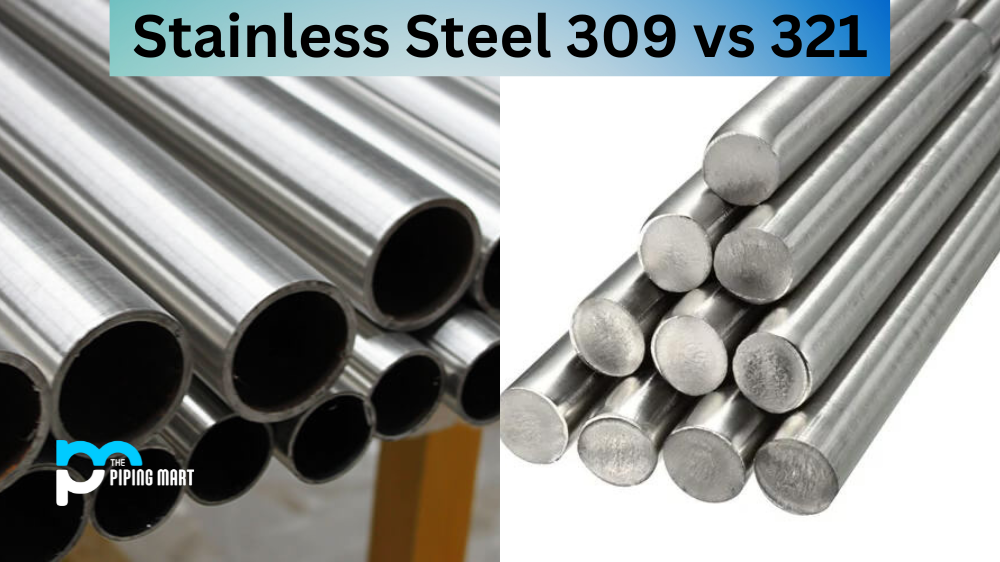When choosing the right stainless steel for your application, the decision can be overwhelming. With so many different grades available, each with unique properties, it can take time to decide which fits your needs best. Two grades that are often compared are stainless steel 309 and 321. In this article, we will dive into the differences and similarities between these two grades so you can make an informed decision for your next project.
What is Stainless Steel 309?
Stainless steel 309 is an austenitic stainless steel alloy, sometimes called Alloy 309 or AISI 309. This alloy contains a high level of chromium and nickel, making it highly resistant to corrosion and oxidation in high temperatures up to 1900F. It can withstand corrosive conditions that destroy other alloys, making it perfect for long-term durability and wear resistance applications.
What is Stainless Steel 321?
Stainless Steel 321 is an austenitic chromium-nickel stainless steel with excellent corrosion resistance and high-temperature strength. Its excellent oxidation resistance allows it to be used in elevated temperatures up to 982°C (1800°F) while maintaining its mechanical properties. It is ideal for various applications, including heat exchangers, furnace parts, automotive exhaust systems, and turbine components.
Difference Between Stainless Steel 309 and 321
Chemical Composition
Stainless steel 309 and 321 have very similar chemical compositions, mainly because stainless steel 321 contains titanium. The addition of titanium enhances the material’s resistance to intergranular corrosion. On the other hand, stainless steel 309 contains a higher percentage of chromium and nickel, which gives it superior corrosion resistance to alkaline solutions and sulfurous gases.
Temperature Resistance
Both stainless steel 309 and 321 are high-temperature alloys with similar operating temperatures of up to 2000°F. However, stainless steel 321 is specifically designed for high-temperature environments where carbide precipitation may occur, which can cause cracking and weakening of the material. Stainless steel 321 is preferred for furnace equipment, jet engine parts, and exhaust manifolds.
Weldability
Both stainless steel 309 and 321 are readily weldable through conventional welding techniques, although some precautions may be necessary to avoid cracking and damage to the material. However, stainless steel 321 is slightly easier to weld than 309 due to the presence of titanium. This makes it more versatile for applications that require a lot of welding, such as piping systems and pressure vessels.
Corrosion Resistance
Both stainless steel 309 and 321 are highly resistant to corrosion, although their specific properties may differ depending on the type of corrosive environment. Stainless steel 309 is the better choice for applications where the material will be exposed to acidic or alkaline solutions. In contrast, stainless steel 321 is ideal for applications that involve exposure to chlorides and other halide-containing solutions.
Cost
Stainless steel 309 is generally less expensive than stainless steel 321. However, the material cost is only one factor to consider when choosing between the two. In the long run, the choice of material should be based on its suitability for application, which may require a more expensive grade.
Conclusion
While both stainless steel 309 and 321 have many similarities, the subtle differences make one more suitable than the other for specific applications. Ultimately, the choice between the two grades will depend on the operating conditions, the corrosive environment, and the fabrication requirements of the project. Consulting with a knowledgeable stainless steel supplier is the best way to ensure you choose the right grade for your needs.

Abhishek is a seasoned blogger and industry expert, sharing his insights and knowledge on various topics. With his research, Abhishek offers valuable insights and tips for professionals and enthusiasts. Follow him for expert advice on the latest trends and developments in the metal industry.




